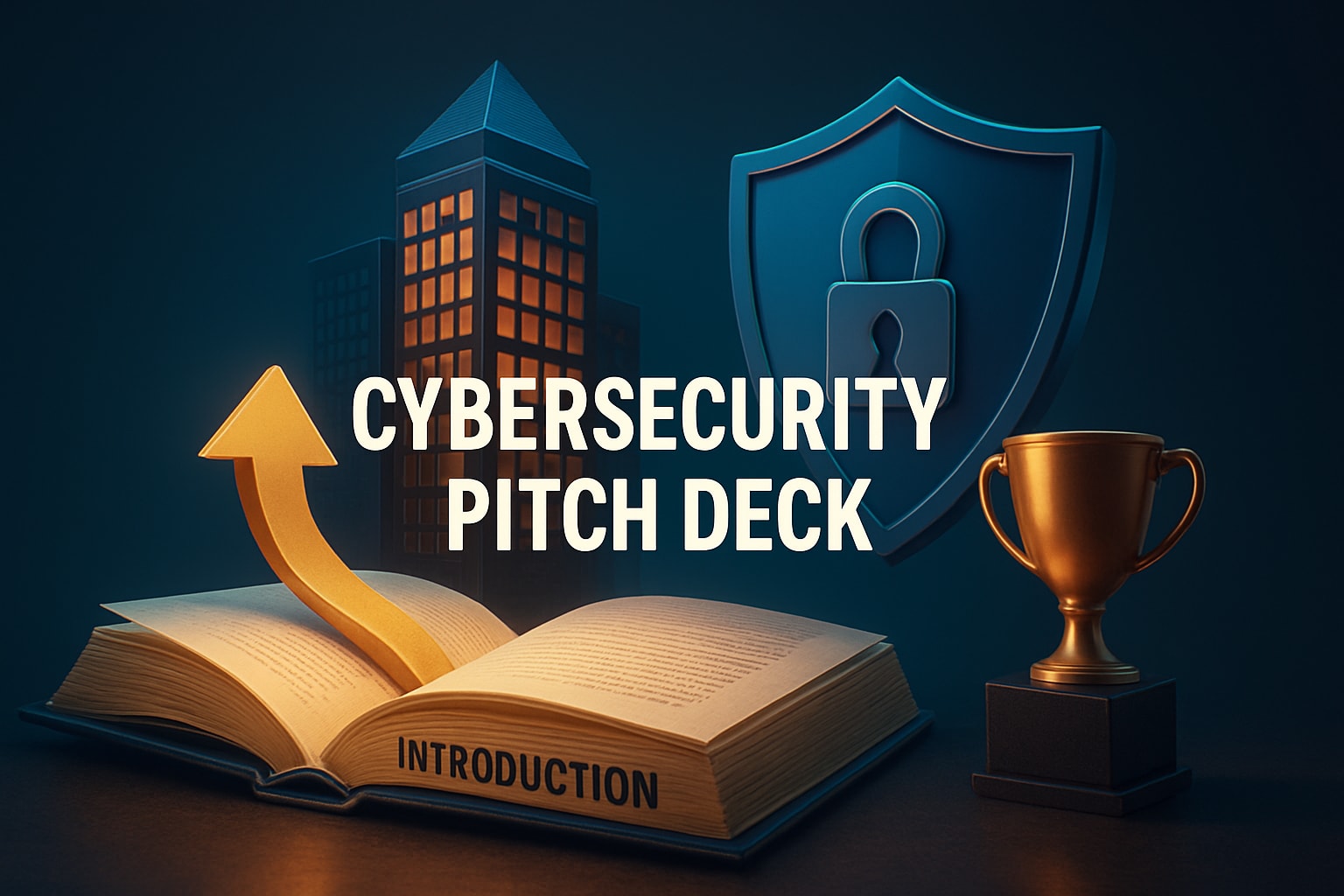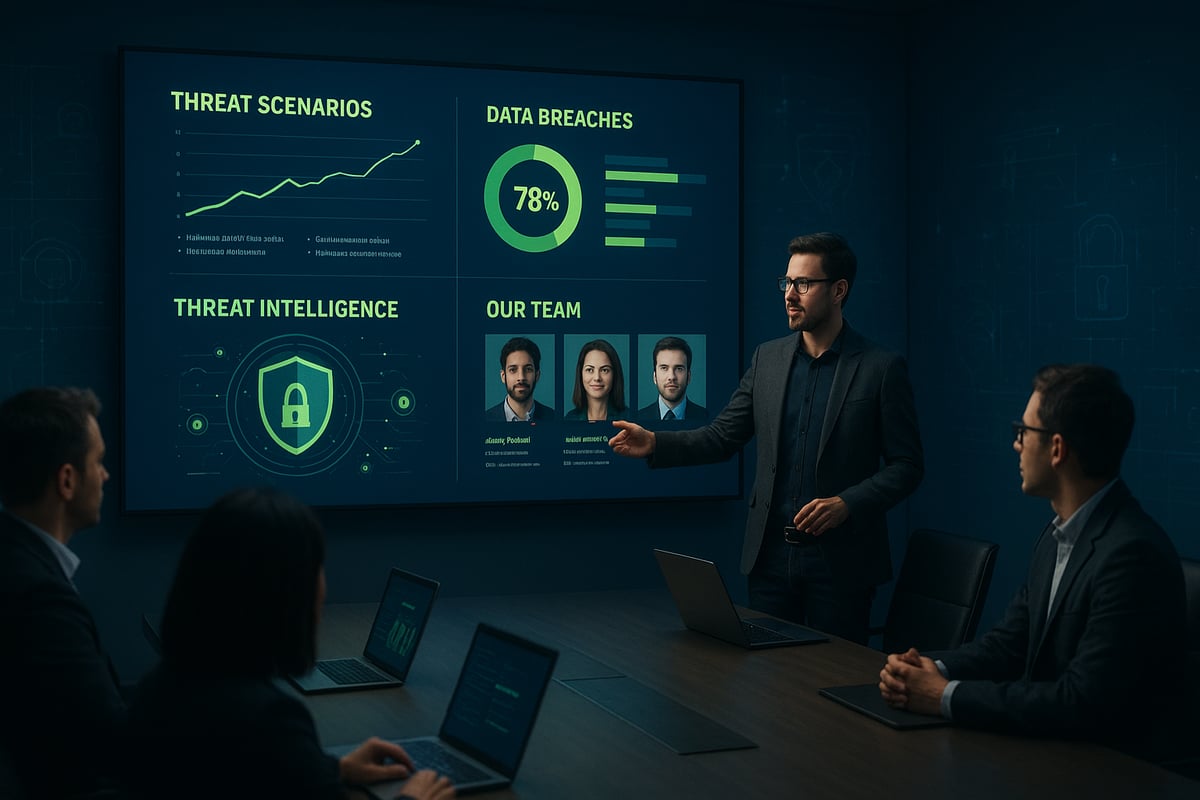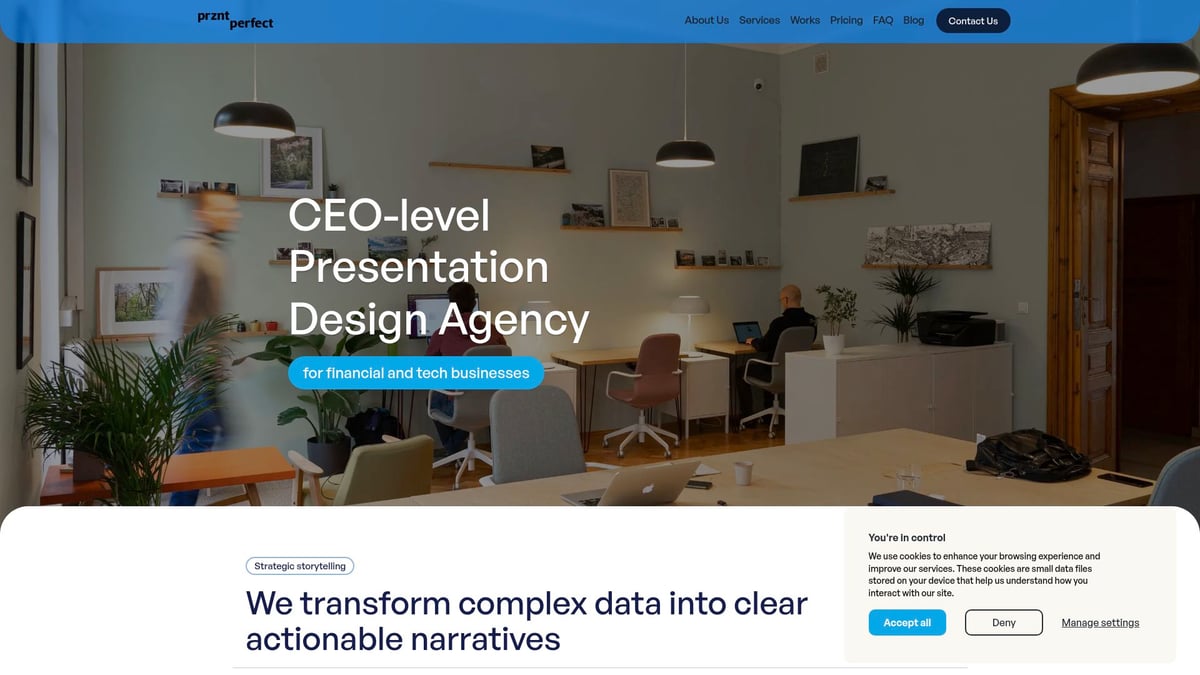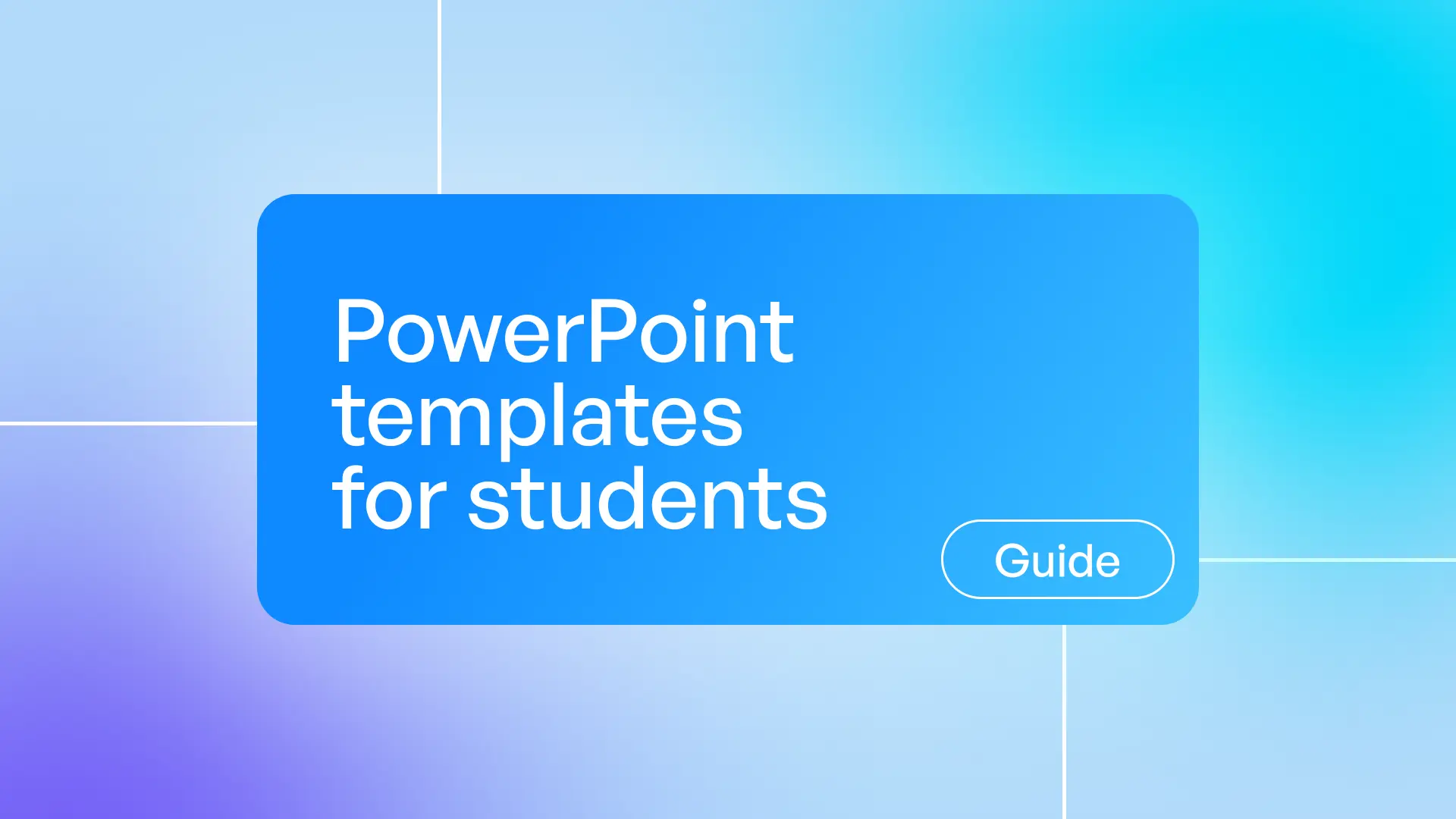Guide to Building a Winning Cybersecurity Pitch Deck 2025

In 2025, the stakes for cybersecurity startups have never been higher. High-profile breaches dominate headlines, and investors are urgently seeking solutions as the global market surges toward $300B by 2026.
Yet, standing out in this crowded space takes more than just advanced technology. Translating your innovation into a compelling cybersecurity pitch deck is now essential to capture investor attention and trust.
This guide delivers actionable steps, proven storytelling techniques, design strategies, and expert tips. You will learn how to structure your deck, address investor priorities, and craft a narrative that convinces and inspires.
Prepare to build a cybersecurity pitch deck that truly resonates with investors and positions your startup for success in 2025.
Understanding Investor Expectations in Cybersecurity for 2025
The cybersecurity investment landscape in 2025 is more competitive than ever. Venture capital is pouring into the sector, with recent years seeing multiple startups secure $100M+ rounds. According to the Moss Adams 2025 Cybersecurity Investment Monitor, investor appetite continues to surge, driven by the rising frequency and cost of cyberattacks. As a result, crafting a standout cybersecurity pitch deck is now essential if you want to catch the attention of leading funds.
Investors today prioritize several core factors before backing a cybersecurity pitch deck:
- Urgency of the threat: Investors want to see that your solution addresses a clear, present danger. Citing real incidents or loss figures strengthens your case.
- Clarity of the problem: Avoid vague or overly technical explanations. Instead, focus on how the issue impacts businesses or consumers in practical terms.
- Trust in the team: A proven, credible leadership team is often the deciding factor. Highlight relevant experience and past successes.
- Scalability of the solution: Investors look for solutions that can grow quickly and handle increasing demand without bottlenecks.
There has been a notable shift from technical jargon to narrative-driven presentations. Top decks, like Awake Security’s Series C, have demonstrated the power of storytelling. Instead of deep technical dives, these decks frame the problem as a story, making the risks relatable even to non-technical investors. For example, rather than saying “Our platform leverages advanced AI for threat detection,” a winning cybersecurity pitch deck might state, “Our AI stops ransomware before it cripples your business.” This approach makes the technology accessible and memorable.
Demonstrating the market opportunity is also critical. Use concrete data to show the size and urgency of the problem. For instance, “70% of SMEs remain under-protected against ransomware” or “The global cybersecurity market is projected to reach $300B by 2026.” Visualizing this information using infographics or charts can make your cybersecurity pitch deck more persuasive and easier to digest.
In a crowded market, differentiation is vital. Highlight what makes your solution unique. Are you serving an underserved segment, such as small businesses or critical infrastructure? Does your technology offer real-time response, compliance automation, or another clear advantage? Use competitive matrices or positioning charts to show where you fit and why you stand out.
Investors will probe with questions like:
| Key Investor Questions | Why They Matter |
|---|---|
| Compliance | Can you meet GDPR, SOC 2, or other frameworks? |
| Scalability | Will your platform handle rapid growth? |
| Competitive Landscape | Who else is solving this problem? |
| Defensibility | What protects you from copycats or large players? |
Traction and validation are critical for building confidence in your cybersecurity pitch deck. Share real-world metrics, such as pilot program results, customer testimonials, or partnership agreements. For example, “Our beta protected 15 companies from 47 breaches in three months.” Even if pre-revenue, show proof of concept and measurable impact.
Finally, your team’s background can tip the scales. Briefly highlight major achievements, such as leading Fortune 500 security teams or raising previous rounds. Mention notable advisors or partners, and explain what gives your team an edge. The most successful cybersecurity pitch deck examples combine credible people, compelling data, and a clear story.
By addressing these investor expectations head-on, you will create a cybersecurity pitch deck that not only informs but persuades. This approach builds trust and positions your startup for success in the competitive 2025 landscape.

Step-by-Step Structure of a Winning Cybersecurity Pitch Deck
Building an investor-ready cybersecurity pitch deck is about more than just slides—it's about shaping a compelling story, backed by data, that convinces investors you are solving a critical problem with a unique, scalable solution.
Let’s break down each essential section your cybersecurity pitch deck must include to maximize your chances of funding success in 2025.

1. Lead With the Problem—Make It Real and Urgent
Start your cybersecurity pitch deck by painting a vivid picture of the threat landscape. Investors need to feel the urgency. Instead of generic statements, use data and real-world examples. For instance, “In 2024, over 30,000 small businesses were hit by ransomware, with average losses exceeding $200,000.” Reference recent news or a case study relevant to your target market.
Connect the problem directly to your customers’ pain points. Ask: What keeps your target audience awake at night? Avoid abstract or jargon-heavy language. Instead of “Our software uses AI to detect malware,” try “Our AI stops malware before it spreads, protecting companies and their customers.”
A compelling opening builds emotional engagement, setting the stage for the rest of your cybersecurity pitch deck. Your goal is to make the problem impossible to ignore and to show that the stakes are high for both businesses and investors.
2. Present a Solution That’s Simple, Clear, and Tangible
After establishing the problem, your cybersecurity pitch deck should introduce a solution that is both easy to grasp and clearly differentiated. Translate technical features into straightforward benefits. Instead of “Predictive threat analytics,” say “We stop attacks before they reach your network.”
Use analogies or visuals, such as “Our platform acts like a security guard that never sleeps.” Diagrams or simple flowcharts can help investors visualize how your solution integrates with current workflows and blocks threats.
Focus on what makes your solution actionable. Does it require minimal setup? Does it work with existing tools? Highlight these points. For a deeper dive on effective slide structure, refer to the Essential Slides for Cybersecurity Decks resource. This will help ensure your cybersecurity pitch deck stands out for clarity and impact.
3. Quantify the Market Opportunity
Investors want to know your cybersecurity pitch deck addresses a sizable, growing market. Use concrete figures to frame the opportunity: “The global cybersecurity market is projected to reach $300 billion by 2026.” Break down your target segments—SMEs, enterprises, or specific industries vulnerable to attack.
Highlight unmet needs within these segments. For example, “70% of SMEs lack adequate ransomware protection.” Use infographics or charts to make market data easy to digest and visually compelling.
Explain why your solution is positioned to capture and defend market share. What trends or regulatory changes are driving demand? The more specific your data, the more credible your cybersecurity pitch deck appears.
4. Demonstrate Traction and Validation
Proof of traction is vital in every cybersecurity pitch deck, even at the pre-revenue stage. Share early adoption metrics, pilot results, or customer testimonials. For example, “Our beta program with 15 companies prevented 47 breaches in three months.”
Use specific, measurable outcomes. Did you sign partnership agreements? Secure a paid pilot? Land a letter of intent from a major client? These details build investor confidence.
If possible, include logos of early adopters or a quote from a satisfied customer. Avoid vague claims—investors want to see real-world impact that validates your cybersecurity pitch deck’s promise.
5. Highlight Team Expertise and Credibility
The team slide in your cybersecurity pitch deck should establish why you are uniquely qualified to win. Present concise bios for your core team, focusing on relevant cybersecurity experience and notable achievements. For instance, “CTO led security for a Fortune 500 company,” or “CEO previously raised two successful rounds.”
Short stories or key milestones can demonstrate your team’s ability to execute. Include any high-profile advisors or strategic partners to further bolster credibility.
Investors often bet on the team as much as the technology, so make sure your cybersecurity pitch deck showcases your collective expertise and commitment.
6. Define Your Unique Value Proposition and Competitive Edge
Your cybersecurity pitch deck must answer: Why you? Clearly articulate what sets your solution apart from competitors. Are you targeting an underserved market? Do you offer real-time AI protection, or focus on compliance for regulated industries?
Use a competitive matrix or positioning chart to visualize your differentiation. Address potential investor doubts about market saturation by emphasizing your unique approach or technology.
Be honest about the landscape, but confident about your edge. This section can make or break your cybersecurity pitch deck’s ability to convince skeptical investors.
7. Address Risks, Compliance, and Scalability Proactively
Investors will have questions about risk, compliance, and scalability. Dedicate slides or talking points in your cybersecurity pitch deck to these topics. Explain how your platform addresses GDPR, CCPA, SOC 2, or other relevant frameworks.
Describe your solution’s scalability: “Our cloud-native platform scales from 50 to 50,000 endpoints with minimal configuration.” Reference third-party audits or certifications when possible.
Anticipate common investor concerns. By addressing these proactively, your cybersecurity pitch deck demonstrates both transparency and preparedness, key factors in earning investor trust.
Crafting an Irresistible Story: Narrative Techniques for Cybersecurity Pitch Decks
Storytelling transforms a cybersecurity pitch deck from a technical document into a compelling call to action. In a high-stakes industry where threats are abstract and ever-evolving, connecting emotionally with investors is essential. A well-crafted story brings urgency and clarity, helping your solution stand out in a saturated market.

The Power of Narrative in Cybersecurity
At its core, a cybersecurity pitch deck must translate complex threats into relatable stories. Investors are inundated with technical claims, but what grabs attention is a narrative that makes risks personal and urgent. Imagine opening your deck with a headline like, “Last year, one ransomware attack crippled an entire hospital network for days.” This sets the stage for why your solution matters.
Narrative-driven decks help investors connect emotionally, making it easier to understand why your team and technology are uniquely positioned to win. By weaving real-world stakes into your presentation, you create a sense of urgency and relevance that pure data cannot achieve.
The Villain Approach and Building Tension
Great stories need conflict, and in cybersecurity, the “villain” is the ever-present threat actor. Start by illustrating a tangible, high-impact breach — such as the Equifax or Colonial Pipeline incidents. This villain-centric approach gives your cybersecurity pitch deck a clear antagonist, making the problem vivid.
Build tension gradually. Show how the risk escalates if left unchecked, using timelines or infographics. Introduce your solution as the hero, offering a clear path to protection. This structure not only captivates but also anchors your value proposition in real-world urgency.
Structuring Your Story with AIDA
The AIDA framework — Attention, Interest, Desire, Action — is a proven model for structuring your cybersecurity pitch deck. Begin by capturing attention with a high-profile incident or shocking statistic. Build interest by detailing the threat landscape and its impact on your target market.
Next, create desire by showcasing how your solution addresses the pain points, offering tangible benefits and outcomes. Finally, drive action by laying out a clear vision, team credibility, and the steps needed for investors to join your mission. AIDA ensures your narrative flows logically and persuasively from start to finish.
Real-World Examples and Story-Driven Slides
Successful decks leverage real incidents as narrative hooks. For instance, referencing the MOVEit breach or a recent supply chain attack can ground your story in reality. Slides might include a timeline of escalating breaches, customer testimonials, or a “before and after” scenario.
For more strategies and examples, the Cybersecurity Pitch Decks Guide offers practical insights on building story-driven presentations that resonate with investors. Highlighting metrics, visual storytelling, and user journeys can further strengthen your deck’s impact.
Cohesiveness and Ending with Vision
A winning cybersecurity pitch deck maintains a cohesive story throughout. Each slide should logically follow the last, building toward a compelling conclusion. Avoid abrupt topic shifts or technical detours that break narrative flow.
End with a visionary statement, such as “Our mission: protect one million SMEs from ransomware in five years.” This leaves investors with a sense of purpose and a clear goal, reinforcing the human impact of your work. A cohesive, visionary narrative not only informs but inspires action.
Design Best Practices for Cybersecurity Pitch Decks in 2025
Creating a standout cybersecurity pitch deck in 2025 requires more than compelling content. Visual strategy, clarity, and accessibility are now essential to persuade investors and set your solution apart. Let’s break down the design elements that will elevate your pitch and help your message resonate.
Visual Hierarchy and Readability
Investors are bombarded with information, so your cybersecurity pitch deck must deliver one core idea per slide. Use clear, bold headlines and keep text minimal. Aim for three to five concise bullet points or a simple visual to support each message.
White space is your ally. It provides breathing room, making your content easier to scan and digest. Consistency in font size and alignment also reinforces a polished, professional look.
For a step-by-step approach to structuring slides, Designing a Cybersecurity Pitch Deck offers actionable guidance on slide order, content flow, and visual clarity.
Data Visualization and Technical Diagrams
Complex data is best communicated visually. Replace blocks of text with infographics, block diagrams, or flowcharts that simplify technical concepts for all stakeholders. Use charts to highlight the scale of the problem, market opportunity, and traction metrics.
Keep diagrams and visuals clean. Avoid clutter by limiting the number of elements per slide and using color sparingly to direct attention. When showcasing how your solution works, a stepwise visual or annotated screenshot can make your cybersecurity pitch deck more tangible.
Branding, Color, and Tone
Brand consistency is vital in your cybersecurity pitch deck. Stick to two primary brand colors and one accent hue to guide the viewer’s eye and reinforce your identity. Use color psychology: blues and teals foster trust, while a strategic highlight color draws attention to key data.
Maintain a professional tone throughout. Visual elements should align with your company’s voice—modern, trustworthy, and innovative. Consistent logos, fonts, and iconography boost recognition and credibility.
Slide Preparation for Multiple Formats
Your cybersecurity pitch deck needs to shine both as a PDF and in live presentations. Choose legible fonts and layouts that scale well on different devices, from laptops to tablets. High-resolution images prevent pixelation and maintain professionalism.
Avoid excessive animations. If you use motion, ensure it is subtle and enhances understanding. Always test your deck on various platforms to guarantee smooth delivery and visual consistency.
Accessibility and Inclusivity
An effective cybersecurity pitch deck is accessible to all. Use high-contrast color schemes for readability, especially for text and key visuals. Ensure all charts, graphs, and diagrams are distinguishable for viewers with color vision deficiencies.
Provide alt text or brief descriptions for essential visuals if the deck will be shared digitally. This not only broadens your audience but also demonstrates a commitment to inclusivity—a value increasingly important to investors.
Pro Tips, Common Mistakes, and Winning Examples
Creating a standout cybersecurity pitch deck in 2025 requires more than technical excellence. Investors expect clarity, urgency, and proof that your team is ready to lead the charge against evolving threats. Here is how to elevate your deck, avoid common pitfalls, and learn from industry leaders.
Pro Tips for 2025 Cybersecurity Pitch Decks
To make your cybersecurity pitch deck resonate, focus on brevity and impact. Limit your deck to 12 to 15 slides, ensuring each one answers, "Why this matters, why this team, why now?" Use active, direct language to convey urgency.
Structure your deck to tell a story. Begin with a real-world threat scenario that highlights the problem, then transition to your solution and its benefits. Clearly define your market opportunity and include concrete traction metrics.
Leverage the latest trends, such as the growing role of AI in cybersecurity, to show you are ahead of the curve. According to AI tops cybersecurity investment priorities, investors are keen on solutions that harness AI for advanced threat detection and response.
Always practice your pitch out loud, refining slides for clarity and consistency. Remember, a sharp cybersecurity pitch deck is your gateway to investor engagement.
Common Mistakes to Avoid
Even the most innovative cybersecurity pitch deck can falter if it falls into common traps. Overloading slides with technical jargon or dense information can alienate non-technical investors. Instead, prioritize clarity and translate features into business outcomes.
Neglecting to quantify the problem or market opportunity is a frequent error. Use specific numbers and sources to validate your claims. Failing to show early traction, such as pilot results or partnerships, weakens your credibility.
Another pitfall is ignoring questions about compliance or scalability. Investors want to see your awareness of GDPR, SOC 2, and industry frameworks. For a deep dive into frequent pitfalls, review Common Pitch Deck Mistakes to ensure your cybersecurity pitch deck avoids these critical errors.
Analysis of a Successful Deck: Awake Security Case Study
Awake Security’s Series C cybersecurity pitch deck offers a masterclass in persuasive storytelling. The deck opens with a gripping breach scenario, immediately establishing the urgency of the problem. Slides are structured for flow, moving from threat landscape to solution benefits and market size.
A standout feature is how Awake Security quantifies traction, sharing metrics like enterprise deployments and prevented breaches. Their team slide highlights deep expertise, with backgrounds from leading cybersecurity firms, building investor trust.
Competitive positioning is visually mapped, showing how Awake outperforms legacy solutions in real-time detection and compliance. The narrative remains cohesive, culminating in a clear vision for market leadership. This approach helped Awake Security secure $36 million and demonstrates the power of a strategically crafted cybersecurity pitch deck.
FAQ: Tone and Language for Persuading Investors
What tone should you use in your cybersecurity pitch deck? Aim for confident and credible language, but avoid arrogance. Speak plainly, translating complex technical details into real-world impact.
Investors respond to urgency and clarity. Use phrases that emphasize immediate threats and the tangible value your solution brings. For example, instead of technical jargon, say, "Our platform prevented 47 breaches in three months."
Frame your cybersecurity pitch deck as a conversation, not a technical manual. Focus on the investor's perspective—how your solution addresses their concerns, mitigates risks, and captures opportunity. Maintain professionalism, but do not be afraid to show your passion for solving critical security challenges.
How to DIY or Work with a Professional Presentation Agency
Choosing how to develop your cybersecurity pitch deck is a pivotal decision for any founder. Your approach can influence investor perception, funding outcomes, and your brand’s credibility. Whether you opt for an in-house build or bring in a specialist, aligning your strategy with your team’s strengths and your fundraising goals is essential.
When to Build In-House vs. Hire an Expert
Determining whether to create your cybersecurity pitch deck internally or to engage a professional agency depends on several factors. Evaluate your team’s design, narrative, and technical communication skills. If you have in-house talent with experience in visual storytelling and a clear grasp of investor expectations, a DIY approach may be cost-effective.
However, for high-stakes fundraising rounds or if your team lacks dedicated design expertise, hiring a specialist can maximize your deck’s impact. Consider the time and resources available, as well as the return on investment that a polished, persuasive cybersecurity pitch deck can deliver.
What to Look for in a Presentation Design Agency
If you decide to partner with a presentation agency, focus on those with a proven track record in the cybersecurity and technology sectors. Look for agencies that understand how to distill complex security solutions into clear, compelling stories that resonate with investors.
Key criteria include:
- Experience with successful cybersecurity pitch deck projects
- Ability to translate technical data into actionable narratives
- End-to-end service, from research and content creation to design and delivery
- Client testimonials or case studies showcasing fundraising wins
A reliable agency should act as a strategic partner, elevating your message and ensuring every aspect of your cybersecurity pitch deck aligns with investor expectations.
Prznt Perfect: Executive-Level Cybersecurity Pitch Decks
Prznt Perfect is a leading agency specializing in cybersecurity pitch deck design for startups, Fortune 500s, and industry innovators. Their team transforms intricate technical concepts into visually powerful, investor-ready presentations that stand out in competitive markets.

With services spanning creative consulting, narrative development, and brand management, Prznt Perfect has helped clients raise over $2.3 billion. The agency’s streamlined process is ideal for founders and executives who value high-impact design, strategic storytelling, and a hands-off experience. Choosing a partner like Prznt Perfect can give your cybersecurity pitch deck the edge needed to secure funding in 2025.
DIY Design: Tools and Templates
For founders who prefer a hands-on approach, modern design tools and customizable templates make building a compelling cybersecurity pitch deck more accessible than ever. Look for templates tailored to cybersecurity startups, offering a wide range of slide layouts, icons, and infographics.
Features to prioritize include:
- One-click color scheme customization and brand integration
- Well-organized, editable slides for various pitch deck sections
- High-resolution export options for both digital and print use
A thoughtfully designed template can streamline your process and help ensure your cybersecurity pitch deck communicates your value proposition with clarity and professionalism.

- This is some text inside of a div block.lay out the facts clearly and compellingly. Use data to establish the ground reality, but remember that facts alone are like the individual strands of a tapestry—necessary but not complete.lay out the facts clearly and compellingly. Use data to establish the ground reality, but remember that facts alone are like the individual strands of a tapestry—necessary but not complete.
- This is some text inside of a div block.lay out the facts clearly and compellingly. Use data to establish the ground reality, but remember that facts alone are like the individual strands of a tapestry—necessary but not complete.




